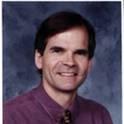Thesis
Ecological amplitude and invasion of diffuse knapweed at Yakima Training Center, Washington
(1996)
Abstract
Diffuse knapweed (Centaurea diffusa) is an introduced annual or short-lived perennial from Eurasia that has become a threat to native rangelands in the Pacific Northwest. Military training activities on the Yakima Training Center (YTC) increase the likelihood that knapweed will expand its range at YTC. This study, conducted in a major watershed at YTC, focused on: 1) how a variety of environmental variables influences knapweed distribution, 2) the use of Landsat Thematic Mapper (TM) imagery to map existing knapweed populations, and 3) the use of a logistic regression model and geographical information systems (GIS) to create a potential knapweed habitat map.
Topographic and climatic factors had the greatest influence on knapweed distribution. Knapweed has a competitive advantage over those which may have some water stress due to increased temperatures (i.e., lower elevations and south slopes). Lower shrub density, greater percent bare ground, and lower percent perennial aerial cover also made for ideal knapweed habitat. Knapweed density decreased as slope steepness, pH, and percent rock cover increased.
Using TM imagery to define existing knapweed populations was unsuccessful because most knapweed stands were less than 30 m X 30 m and had little effect on the TM image values. However, the TM imagery was useful in defining potential knapweed habitat along with other variables. Sixty percent of the Selah watershed has the potential to support knapweed. Approximately 68 % of the potential knapweed habitat was infested with knapweed. Denser patches (> 1 plant per m2) were limited to 21% of the potential habitat.
Disciplines
Publication Date
1996
Degree
Master of Science
Field of study
Range Science
Department
Rangeland Resources
Advisor
Christopher A. Call
Citation Information
Donna D Wilcox. "Ecological amplitude and invasion of diffuse knapweed at Yakima Training Center, Washington" (1996) Available at: http://works.bepress.com/christopher_call/82/
